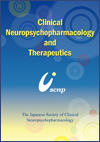Volume 9
Displaying 1-7 of 7 articles from this issue
- |<
- <
- 1
- >
- >|
Letter to the Editor
-
2018 Volume 9 Pages 1-2
Published: March 09, 2018
Released on J-STAGE: March 09, 2018
Download PDF (44K) -
Article type: Letter to the Editor
2018 Volume 9 Pages 12-14
Published: April 10, 2018
Released on J-STAGE: April 10, 2018
Download PDF (80K) -
2018 Volume 9 Pages 15-16
Published: July 06, 2018
Released on J-STAGE: July 06, 2018
Download PDF (44K)
Brief Report
-
2018 Volume 9 Pages 3-6
Published: March 14, 2018
Released on J-STAGE: March 14, 2018
Download PDF (71K)
Case Report
-
2018 Volume 9 Pages 7-11
Published: April 03, 2018
Released on J-STAGE: April 03, 2018
Download PDF (134K) -
2018 Volume 9 Pages 17-19
Published: August 17, 2018
Released on J-STAGE: August 17, 2018
Download PDF (58K)
Original Contribution
-
Article type: Original Contribution
2018 Volume 9 Pages 20-28
Published: September 28, 2018
Released on J-STAGE: September 28, 2018
Download PDF (336K)
- |<
- <
- 1
- >
- >|
